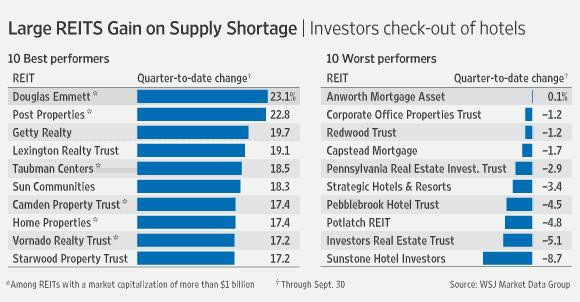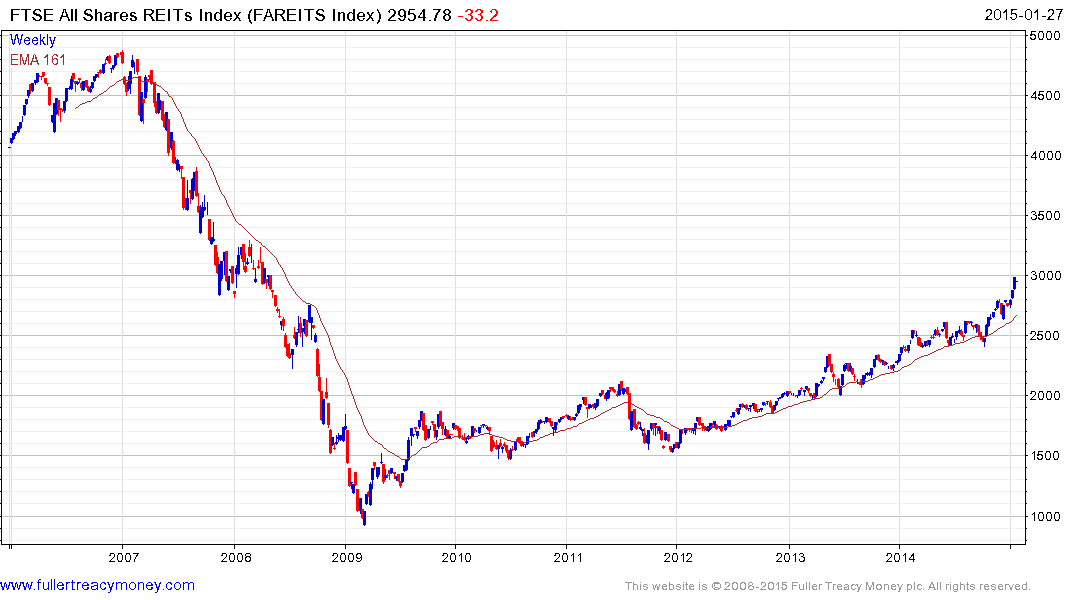Hotels Poised To Be The Best Performing REIT Sector In 2013
Post on: 16 Март, 2015 No Comment

In this article we show that hotels are positioned for outperformance, catalyzed by tremendous fundamentals and the removal of negative stimuli. Understanding its outlook requires us to first look at where the sector is now, and how it got here.
All time low interest rates have created a frenzied search for yield in which REITs have become the darling of income investors. Some have turned to mortgage REITs for the double digit yield, while others, who wanted the security of income derived from a tangible source, turned to equity REITs. Fears of the fiscal cliff and now the lack of resolve to the debt ceiling (and the budget) instill apprehension which has led investors to locked-in revenue such as triple net REITs. In this frenzy, only the hotel sector remains untouched as investors do not want day to day revenue which could disappear at the first sign of crisis. Consequently, it is undervalued while the rest of REITs are pricey.
The hotel sector has a weighted average price/FFO of 13.0, while US Equity REITs average 16.0. When translated to expected earnings return on invested capital (or EROIC) we can see that hotels produce 7.6923% annually while REITs as a whole give 6.25%. That’s 23.08% more earnings than the REIT average.
Below are some very important statistics of the hotel REITs. Taken as a whole, this is an overwhelming amount of information, but in the passages below the importance of some of this specific data will become clear.
Going forward into 2013, I believe two catalysts will emerge that will vault the hotel sector to outrageous re turns, impro ving fundamentals and fair market treatment.
Catalyst # 1 improving fundamentals
Regardless of the source you lo ok at, analy sts estimates for RevPAR in 2013 are overwhelmingly positive. Smith Travel Research is the most bullish with estimates of 7.0% RevPAR growth, PKF Hospitality Research takes the middle-ground with forecasts of a 6.0% increase and PricewaterhouseCoopers is on the bearish side with a 2013 estimated RevPAR increase of 5.4%.

For our calculations we will be using the median estimate of 6.0% to give a fair representation. It is based on RevPAP (Revenue Per Available Room) which is a composite of ADR (Average Daily Rate) and Occupancy.
What makes this growth even more effective is the nature of it. In the early parts of this upswing in the hotel cycle, much of the RevPAR growth came from occupancy, while 2013 growth should be almost entirely from ADR. Occupancy gains add to expenses which partially consume the revenue gain, while increases to ADR directly add to bottom line profits. Mark Woodworth, president of PKF Hospitality Research, provided statistics in an interview with SNL Financial demonstrating the mix of RevPAR growth. He said that 2010 gains were 100% occupancy driven. In 2011, when RevPAR climbed 8.2% about 55% was occupancy. He also mentioned that 2012 came in around 33% occupancy and 66% ADR. His forecast for 2013 has the 6.0% RevPAR growth 85% driven by ADR growth. This translates to approximately a 5.1% increase in ADR.
So a 5.1% bump in 2013 to ADR sounds nice, but what does it mean for earnings? Well, as just a price increase, it comes with no expenses so it will add about 5.1% to revenue, all of which will transfer to FFO. Thus the 5.1% is amplified by the ratio of revenue to FFO. Here is this ratio for each of the hotel REIT companies.
FFO/ Total Revenue MRY (%)














